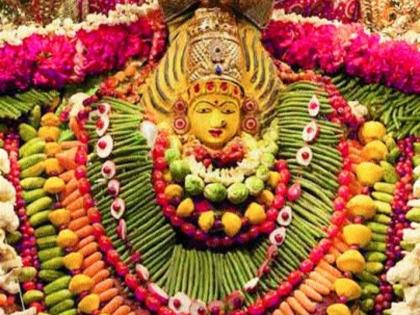Shakambhari Navratri 2025: Dates, Shubha Muhurta, and Festival Rituals Explained
By Lokmat English Desk | Updated: January 4, 2025 16:45 IST2025-01-04T16:33:40+5:302025-01-04T16:45:57+5:30
India celebrates three Navratri festivals each year: Chaitra Navratri, Sharadiya Navratri, and Shakambari Navratri. While Chaitra Navratri (from Gudi ...

Shakambhari Navratri 2025: Dates, Shubha Muhurta, and Festival Rituals Explained
India celebrates three Navratri festivals each year: Chaitra Navratri, Sharadiya Navratri, and Shakambari Navratri. While Chaitra Navratri (from Gudi Padwa to Ram Navami) and Sharadiya Navratri (from Ashwin Shuddha Pratipada to Ashwin Shuddha Navami) are widely observed, Shakambari Navratri is relatively lesser known. This year, Shakambari Navratri will be celebrated from January 7 to January 13, starting on a Tuesday, which adds to its auspiciousness.
Shakambari Navratri begins on Paush Shuddha Saptami and concludes on Paush Shuddha Pournima, following rituals similar to those of Ashwini Devi Navratri. It honors Shakambhari Devi, also called Banashankari, revered as the goddess of sustenance and nourishment. She is the family deity of many Rigvedic Brahmin families in India. A prominent temple dedicated to her is located in Badami, Bijapur, where an annual grand chariot festival is held, and her palanquin is paraded every Friday throughout the year.
Date And Timings
Start Date: January 7, 2025 (Banada Ashtami)
End Date: January 13, 2025 (Shakambhari Purnima)
Ashtami Tithi:
Begins: January 6, 2025, at 06:23 PM
Ends: January 7, 2025, at 04:26 PM
According to the Devi Bhagavata Purana, Shakambhari Devi appeared during a severe drought to save humanity. She manifested various vegetables and greens from her body to feed starving people, earning her the name ‘Shakambhari’, meaning ‘the bearer of vegetables’. Shakambari Navratri is celebrated with great devotion, culminating on Shakambari Pournima, when devotees offer sixty types of vegetables and salads to the goddess. This practice reflects her role as a symbol of health and nourishment. In a world increasingly focused on wellness, incorporating a variety of vegetables, fruits, and salads into daily meals during these nine days can be a meaningful observance.
Dieticians often emphasize the importance of a balanced diet for good health. Shakambari Navratri provides an opportunity to adopt healthier eating habits, share nutritious meals like vegetable juices with others, and promote wellness as part of a spiritual practice. This Shakambari Navratri, let’s honor the goddess who embodies sustenance by embracing a healthier lifestyle. As we chant ‘Jai Mata Di’, let’s also commit to spreading the message of nourishment and wellness. Celebrate the festival by adding vibrant vegetables to your plate, sharing the bounty with loved ones, and embracing health as a form of devotion.
Open in app